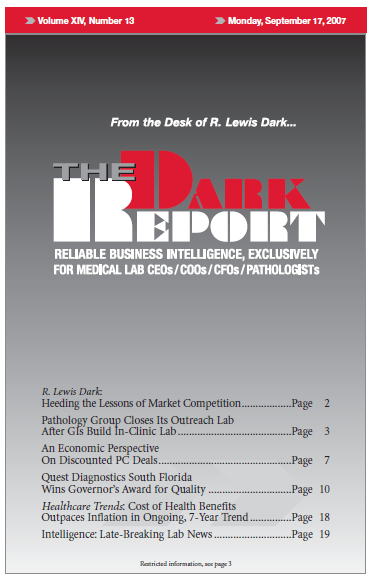CEO SUMMARY: By opening their own in-office pathology laboratories, specialist physicians are undermining a long-established referral relationship with the pathology profession. Pathologists are debating the merits of this market-based trend and its effect on their profession. However this debate often fails to include an objective assessment of how contracting for professional services can provide financial …
An Economic Perspective On Discounted PC Deals Read More »
To access this post, you must purchase The Dark Report.


